Two years ago, I had the opportunity to interview, Don Walsh one of two men to first visit the deepest point of the world’s ocean and one of only three to succeed. Below is that interview reposted.
I asked, “What were the events that lead to you to dive the Marianas Trench?”
“I found myself there for all the wrong reasons,” Walsh responded quickly.
Don Walsh probably always possessed the explorer gene. But it was genes plus environment that produced this man. Walsh grew up in the large port of San Francisco Bay inundated with the salty air, large ships, small boats, dark waters, a busy port, and the momentous Fleet Week. These potentially hinted that something beyond San Francisco existed, something more to explore, and the commonness of people traveling to new places. “It seemed natural that I join the Navy.”
Oddly Walsh’s Naval career started off on a torpedo bomber facing backward. “I really wanted to be in the pilot seat facing forward.” The best way toward this was obtaining a college degree and particularly through the Naval Academy. When I asked how he succeeded in gaining entrance into the prestigious Naval Academy, Walsh replied “Luck.” Upon completion, all graduates of the academy are required to serve as watch officers aboard a surface ship for two years. After serving aboard both the USS Wisconsin and the Albany, Walsh had hoped to specialize in aviation and return to the cockpit. However, poor eye sight prevented this path. Thus began a career as a submariner.
Eventually he was asked to join the submarine command staff in San Diego. The position was temporary. As other submarines and their officers cycled through the port, they would also cycle through Walsh’s position. Each officer serving in this post was to return back to a field command aboard a submarine after six weeks. This did not happen. “I did my job too well and was kept in the post.”
Eventually in 1958, the Office of Naval Research purchased the Bathyscaphe Trieste from the French Navy. Given the proximity to deep water, the U.S. Navy decided the Trieste should join the fleet at San Diego. Walsh was contacted to learn about this submersible and eventually brief the commander.
Two pilots were needed to operate Trieste. The closest the U.S Navy could offer were the intermediate ranking officers of submarines. Walsh was given the order to send out a message to these officers in the Pacific Fleet asking for volunteers to train and eventually pilot the Trieste. Only one of twelve potentials volunteered to pilot this metal sphere to deepest parts of the oceans. Eager to leave his San Diego desk and return to the sea, Walsh volunteered for the other position.
The other volunteering officer outranked Walsh. As coincidence or fate would have, however, the senior officer fell ill, and Walsh became the ranking Naval officer on the Trieste project. Just three months after joining the project in March 1959, Don Walsh dove to 4,000 feet, ten times deeper than the during his previous posts aboard submarines. One year later off Guam, the delay needed as the Trieste was originally only designed to dive to 20,000 feet, Walsh would go more than 100 times deeper.
Walsh and I never discussed the actual dive on the Challenger Deep as so many others before have covered this ground with him. Instead I choose to finish our discussion in another way. When I asked Don Walsh what question he wished somebody would ask him, he responded,
“Why is this all important? Why must we visit the deepest spots of our oceans?”
Walsh started his answer by relaying what a commanding officer said to him when he showed him a photograph of fish taken in the Challenger Deep, “Most expensive goddam picture of fish ever taken!”
Walsh, a pragmatic man and a rare trait in explorer but perhaps common of retired naval officers, finally answered “We have seen the origins of plates at mid-oceanic ridges, it only makes sense we would see their demise at the bottom of trenches.” And for a brief second the explorer gene was stronger than the gene for pragmatism, “Also because it’s there and we can.”
Jacque Cousteau once said to his son Jean-Michel that his life was “a lot of little things that came together just right.” Cousteau’s and Walsh’s life both exemplify the opportunity of the unplanned and the ability and drive to pursue and recognize it. Our paths in life are often not a straight trajectory from here and now at point A to the future point B, even if we know exactly what we B to be. We wander a tangled path with a series of unexpected events . As an undergraduate I was deeply disappointed when a professor did not choose me to dive in St. Croix conducting reef fish counts. Another professor, my alternate choice, did invite me to work in their research group. That professor eventually became my Ph.D. advisor and instilled passion and knowledge in me for the deep sea, which led to an eventual submersible dive of my own, a marine blog, and recently a discussion and car ride with the legend and man who is Captain Don Walsh.
All we can do is recognize opportunity in the unexpected, long to explore the origin and the conclusion, and sometimes take the risk because it’s there and we can.


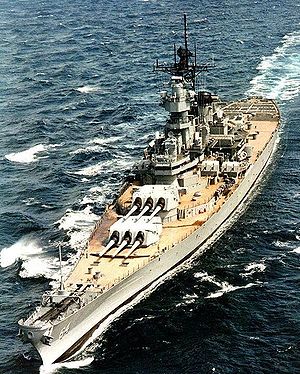
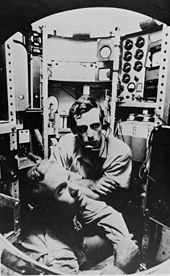

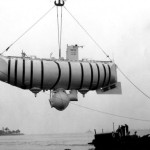
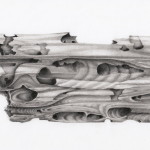

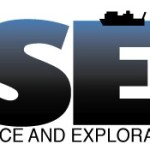
I knew nothing about Don Walsh and the advent of deep sea exploration-your articles always instruct! Most of all however, I appreciate your musings on crooked paths and those serendipitous moments that later become historic events.